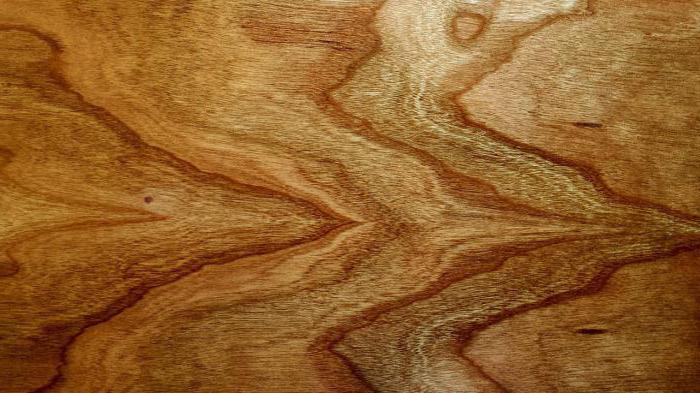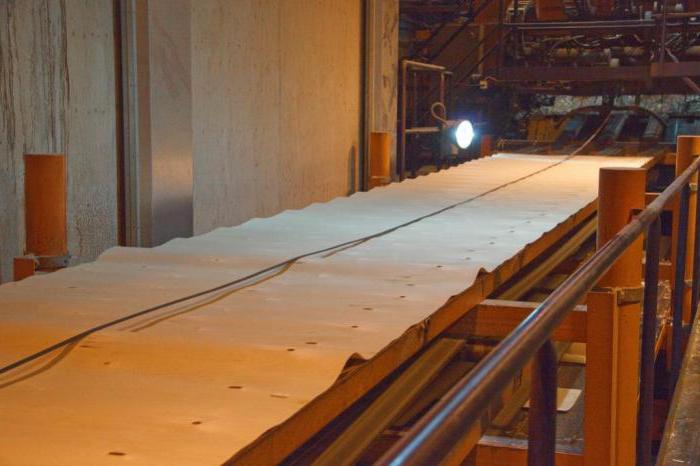Rotary cut veneer: production technology, application
What is the veneer, know not all, but only those,who deals with this material. So called very thin layers of wood, which are obtained by sawing, planing or peeling of wood logs.
Scope of application
Today veneers are most often used to tile wood furniture. But this is not the only sphere where it is difficult to do without this material. This is the manufacture:
- Doors.
- Skateboards.
- Cases for musical instruments.
- Delta-wood.
- Plywood.
- Matchbox straws.
- Finishes for auto salons.
Comparative characteristics

- Sawn - 0.1-1.0 cm.
- Sliced - from 0.2 to 5 mm.
- Thinning - 0.1-10 mm.
Thus, the cut thickness veneer is differentfrom similar materials and is much cheaper. Since among all the listed ways of obtaining veneers, the most affordable is just the peeling, so we will go further on this method.
Distinctive characteristics

- The lowest value of thickness. In other words, this kind of material is the thinnest.
- If siltwood is used, the decorative properties of the material are significantly increased.
- Between late and earlier wood there are large gaps.
- The cost. It is the lowest because of the peculiarities of production. If more expensive raw materials (cedar, larch) are used, the cost will be higher. But if you compare with other methods of production, the price will still be lower.
Production features

- Prepare wood blanks of a certain length. To do this, the cut off trunk is cleaned of branches, branches, various growths.
- The lathe is placed prepareda wooden workpiece. Use for this you can any wood - dry or damp. More importantly, it is easier to abrade not dry, dry wood, namely. The main thing is to adjust the cutting element of the lathe as accurately as possible so that it removes the top layer from the workpiece in a spiral, thus giving a solid web.
- Produce coarse, and then primary processing of the workpiece. This is necessary to remove the bark of the tree and to level the surface - it becomes smooth, even.
- The final stage is the removal of a layer of wood of a predetermined thickness. The layer is removed along the entire length of the workpiece at the same time, which makes it possible to obtain a material of maximum width.
But the finished tape is still a semi-finished product, whichmust be amenable to further processing. The main document on which the rotary cut veneer is produced is GOST 2977-82, so it prescribes the following actions: ready-made canvases must be sorted taking into account the quality of the products, its appearance, the wood species, the texture, then - mark, cut into pieces, join edges and only afterwards this is to fix each pack. And not ordinary packing materials, but special devices are used.

If, however, birch veneer is processed, the material is obtained with higher aesthetic values. In addition, the production of peeled veneer comes from the following types of wood:
- Beech.
- Oak tree.
- Ash.
- Lime trees.
- Ilmy.
- Cedar.
- Larches.
The more expensive raw materials, the higher the cost and, accordingly, the aesthetics of the material obtained. In addition, the further use of the resulting material depends on the type of wood used.
disadvantages
Despite the low price, the cutlery veneer is not soIt is popular for facing in those cases where beauty is required, unusual design and decorative surface finish. To eliminate this drawback, it must be decorated, which allows full use of the canvas as a facing material.
To enhance the decorative effect, you cansubject the peeled veneer to surface dyeing, hot printing (pyrotipy), opaque finish. But the original form does not prevent it from being used for other types of work.
Slevage wood

The most popular breeds, of whichmake veneer - birch, but not ordinary, but Karelian, and also sugar maple. Moreover, the birch is more unusual due to the fact that it grows on the Kola Peninsula, the conditions there are quite severe, and the annual rings near the trees do not lie along the circumference, but have the appearance of undulating sockets.
Sugar maple wood is coatedfibers-knots that have dark centers. But since this tree species does not occur in the territory of the former Soviet Union, with the exception of the Crimean Botanical Garden, only birch is used to make veneer material with high aesthetic characteristics. The technology of production of peeled veneer from Karelian birch is the same as from other breeds, but the cost, in view of the special value of the material, is somewhat higher.
</ p>



